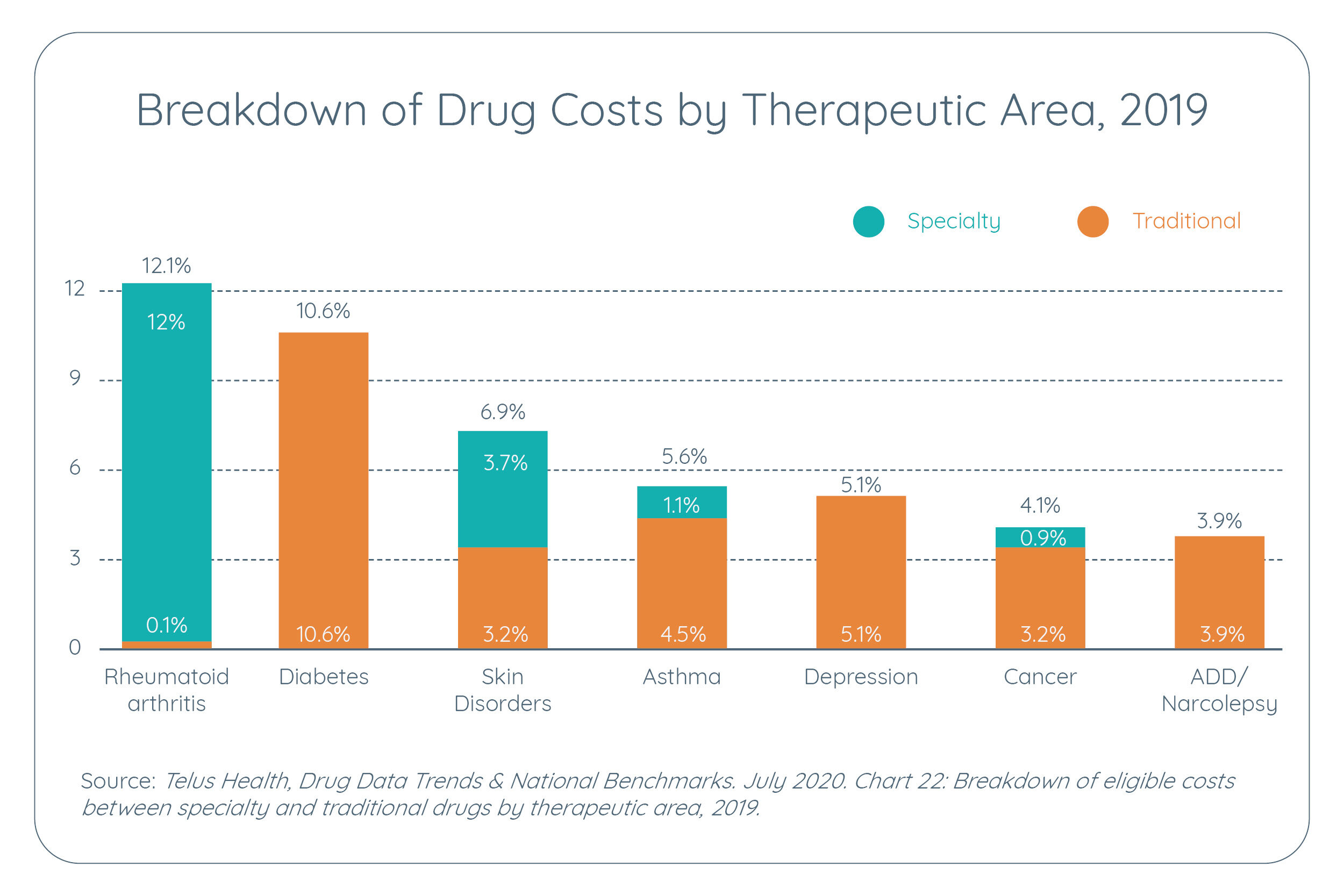The Impact of Rheumatoid Arthritis to Your Plan and Plan Members
Today, October 12, is World Arthritis Day. On this day, patient advocates and other organizations around the world promote awareness of arthritis symptoms and champion the importance of early diagnosis and intervention. In honour of this initiative, we thought we’d highlight rheumatoid arthritis (RA) as it may affect you, your people, and your benefit plan.
RA is an autoimmune disease; this means that it is a disease in which the immune system misinterprets healthy human cells or organs as disease-causing and launches a defensive attack against the healthy body. In patients with RA, the immune system attacks the musculoskeletal system, joints and connective tissues causing debilitating pain and inflammation. RA should not be confused with the aches and pains associated with aging – those are generally due to osteoarthritis, which is more mechanical in nature and caused by a progressive breakdown in the protective tissue cushioning our joints. RA is more prominent in women, with symptoms typically appearing around age 40. Rheumatoid arthritis is a bit of an enigma; we’re not entirely sure what causes it or why it manifests in one person over another. What we do know, is that having a family member with RA can increase your likelihood of developing this disease. Its unpredictability – along with the unpredictability of many other autoimmune disorders – is the most persuasive argument for why we need to learn more about this diagnosis and its treatment plans.
The Sanofi Canada Healthcare Survey 2020 reports that two-thirds of plan members live with a chronic condition and/or chronic pain. More than half of these plan members report that their condition has a negative impact on their job performance. The negative impact translates to diminished job performance, missed work hours, and increased use of sick days. Ultimately, unmanaged impairments lead to full work absences and increased Short-Term Disability utilization; this doesn’t have to be the case. Proactivity and an understanding of how to make treatments accessible and affordable for your employees is key.
Rheumatoid Arthritis is treated with a varying regiment of drugs focused on reducing localized and systemic inflammation. These drugs range from over the counter, nonsteroidal anti-inflammatory drugs (NSAIDS) to disease-modifying antirheumatic drugs (DMARDs), depending on severity of the patient’s condition.
The Telus Health Drug Data Trend & National Benchmarks Report 2020 indicates a doubling of the specialty drugs share of eligible drug plan costs - from 14% to 30% - over the last ten years. The number of claimants remains steady at around 1% - when a small population of your employee base is driving cost, that’s a statistic worth noting. Specialty drugs are forecasted to represent 46% of the average month certificate cost by 2025. What can we take away from this? Chronic pain is costly – to your employees, and to you.
Many RA drugs are classified as biological drugs – drugs that support and encourage the body to perform its natural function and tame the immune response which attacks healthy cells. Historically, these medications have brought with them tremendous results, but at a significant cost. Times are changing and several of these revolutionary medications now have the availability of a biosimilar replacement. Biosimilar drugs are approved according to the same standards of pharmaceutical quality, safety, and efficacy that apply to all biological medicines. What you need to know is that a biosimilar has “no meaningful differences” between it and its brand-name biologic medication. As an example, Remicade is the originator drug to Inflectra, a biosimilar medication, which brings a price tag of approximately half the cost of Remicade.
Protect your plan and plan members through a balance between reasonable patient access and sustainable financial responsibility. If you haven’t already taken the steps to do a full review of your drug plan formulary, including your insurance providers plan to take full advantage of the cost saving from biosimilar drugs – do so now. While we can’t eliminate the costs of chronic pain, we can help mitigate and manage those, together.
TAKEAWAY: Manage costs while supporting healthy outcomes for your people and your business. Working together with OHB, we can bend and influence this curve, too!



